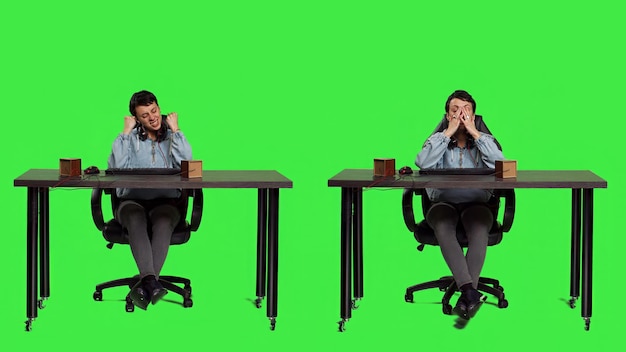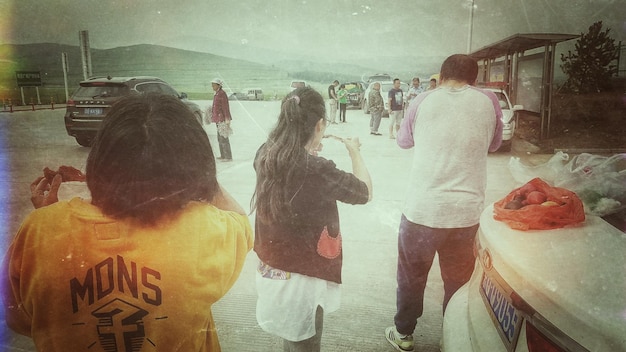Micro-Trips: Are 3-Day Getaways the New Vacation Trend?

Micro-trips, short and sweet three-day vacations, are rapidly gaining popularity, fueled by social media trends and the desire for quick, accessible escapes from everyday life, offering a refreshing alternative to traditional, longer vacations.
Are long, drawn-out vacations a thing of the past? It seems like the travel landscape is shifting, with more and more people opting for shorter, more frequent getaways known as micro-trips. These three-day adventures are taking over social media, promising maximum relaxation and exploration in minimum time. Let’s dive into why these bite-sized breaks are becoming the vacation of choice for a generation.
The Rise of the Micro-Trip: Why 3-Day Getaways Are Trending
The concept of a micro-trip isn’t entirely new, but its recent surge in popularity is hard to ignore. Thanks to platforms like Instagram and TikTok, we’re bombarded with images of people jetting off for quick adventures, sparking a collective desire for accessible and frequent travel. But what’s driving this trend, and why are people ditching the traditional week-long vacation for shorter stints?
The Instant Gratification Generation
We live in an era of instant gratification. We want what we want, and we want it now. This extends to our travel desires. Micro-trips offer a quick fix for wanderlust, allowing us to experience new places and cultures without the significant time commitment of a traditional vacation.
The Financial Factor
Let’s face it, vacations can be expensive. Flights, accommodation, food, and activities all add up. Micro-trips, on the other hand, are often more budget-friendly. By shortening the duration of the trip, travelers can save on costs, making travel more accessible to a wider range of people.
- Reduced Accommodation Costs: Shorter trips mean fewer nights in hotels or rentals.
- Lower Transportation Expenses: Quick flights or drives can be more economical than long-haul travel.
- Flexible Spending: With a shorter timeframe, you can allocate your budget more strategically.
Micro-trips are trending due to the promise of instant gratification and smaller costs, making traveling more accessible and realistic.

The Mental Health Benefits of Short Escapes
It’s easy to get caught up in the daily grind. Work, family, and other responsibilities can leave us feeling stressed and burnt out. Micro-trips offer a much-needed opportunity to disconnect, recharge, and prioritize our mental well-being. But can a short trip really make a difference?
Breaking the Routine
Even a few days away from our regular routine can have a significant impact on our mental state. Stepping outside our comfort zone, exploring new environments, and engaging in novel activities can help us to break free from negative thought patterns and gain a fresh perspective on life.
Reduced Stress Levels
Studies have shown that even short periods of travel can reduce stress levels. The act of planning and anticipating a trip can boost our mood, while the actual experience of traveling can lower cortisol levels and promote relaxation. A micro-trip that is well planned can create positive changes in our minds.
- Mindful Exploration: Focusing on the present moment and engaging with your surroundings.
- Digital Detox: Unplugging from technology and disconnecting from work emails.
- Active Relaxation: Combining physical activity with relaxation techniques like yoga or meditation.
Short escapes offer a vital opportunity to reset and recharge, improving mental well-being by breaking daily routines and lowering stress.
Planning the Perfect Micro-Trip: Maximizing Your 72 Hours
The key to a successful micro-trip is meticulous planning. With only 72 hours to play with, you need to make every moment count. This means carefully selecting your destination, crafting a detailed itinerary, and packing strategically. Let’s explore some tips for making the most of your short getaway.
Choosing Your Destination
When it comes to micro-trips, proximity is key. Opt for destinations that are easily accessible by car, train, or a short flight. Consider cities that offer a diverse range of experiences, from cultural attractions and culinary delights to outdoor adventures and scenic landscapes.
Crafting Your Itinerary
A well-structured itinerary is essential for maximizing your time. Research the must-see attractions and activities in your chosen destination and create a realistic schedule that allows for both exploration and relaxation. Don’t try to cram too much into your trip – it’s better to focus on a few key experiences rather than trying to see everything.
- Prioritize Experiences: Focus on activities that align with your interests and passions.
- Embrace Flexibility: Leave room for spontaneity and unexpected discoveries.
- Utilize Travel Apps: Streamline your planning and navigation with helpful apps.
With proper planning, even a 72-hour trip can be a fulfilling adventure. By picking a location easily accessible, one can make the most of the limited time frame.
Micro-Trip Destinations Across the US: Inspiration for Your Next Getaway
The United States is a treasure trove of micro-trip potential, with countless cities and regions offering unique experiences within a short distance. From bustling metropolises to tranquil natural landscapes, there’s a destination to suit every taste. Let’s explore some popular spots for short escapes.
New York City: A Weekend of Culture and Cuisine
The Big Apple needs no introduction. With its iconic landmarks, world-class museums, and vibrant culinary scene, NYC is a perfect destination for a weekend getaway. Catch a Broadway show, explore Central Park, indulge in diverse cuisines, and soak up the city’s eclectic atmosphere. The sights of NYC are sure to entertain.
Austin, Texas: Live Music and Outdoor Adventures
For a taste of Southern charm and eclectic vibes, head to Austin, Texas. Known for its live music scene, outdoor recreational spaces, and mouthwatering food, Austin offers a unique blend of urban and natural attractions. Explore Zilker Park, catch a show on Sixth Street, and savor the city’s famous barbecue.

- Savannah, Georgia: Known for its historic architecture, Southern hospitality, and spooky tales.
- San Diego, California: Famous for its beautiful beaches, surfing, and vibrant nightlife.
- Denver, Colorado: Perfect for outdoor enthusiasts seeking hiking, skiing, and stunning mountain views.
There is an abundance of short distance travel stops throughout the US for anyone looking to get away for a few days.
Micro-Trips and Social Media: Fueling the Wanderlust
Social media has played a significant role in the rise of the micro-trip. Platforms like Instagram, TikTok, and Pinterest are filled with visually appealing content showcasing quick getaways, inspiring viewers to plan their own short adventures. How is the widespread use of social media impacting the travel industry?
The Power of Visual Storytelling
Social media is all about visual content, and travel experiences are particularly well-suited to this medium. Stunning photos and videos of exotic destinations, mouthwatering meals, and unique adventures can spark a sense of wanderlust and encourage others to explore the world.
Influencer Marketing
Travel influencers have become a powerful force in the industry, shaping travel trends and inspiring their followers to visit specific destinations. By partnering with hotels, tour operators, and tourism boards, influencers can promote micro-trips and showcase the benefits of short getaways.
- Hashtag Campaigns: Encouraging travelers to share their micro-trip experiences using specific hashtags.
- User-Generated Content: Showcasing authentic travel experiences from everyday people.
- Live Streaming: Providing real-time updates and insights from micro-trip destinations.
These microtrips generate the feeling of wanderlust which may influence others to plan their own trips. In this, social media can be a powerful tool for travel marketers.
The Future of Travel: Are Micro-Trips Here to Stay?
The micro-trip trend shows no signs of slowing down. As lifestyles become increasingly busy and demanding, the need for quick and accessible escapes will likely continue to grow. But what does the future hold for this style of travel? Are micro-trips a fleeting fad, or are they here to stay?
Increased Flexibility and Customization
As travel technology continues to evolve, we can expect to see even greater flexibility and customization in micro-trip planning. AI-powered travel apps will be able to create personalized itineraries based on individual preferences, while flexible booking options will allow travelers to easily adjust their plans on the fly.
Sustainable Travel Practices
With growing concerns about the environmental impact of travel, we can expect to see a greater emphasis on sustainable micro-trip practices. This could include choosing eco-friendly accommodation, supporting local businesses, and reducing our carbon footprint through responsible transportation choices.
- Regenerative Tourism: Focusing on giving back to the destinations we visit.
- Slow Travel: Prioritizing meaningful experiences over rushed sightseeing.
- Carbon Offset Programs: Compensating for our travel-related emissions.
Taking steps toward sustainability can improve our world. With these strategies in place, microtrips will be around for years to come.
| Key Point | Brief Description |
|---|---|
| 🚀 Quick Getaways | Micro-trips offer fast and accessible escapes from the daily grind. |
| 💰 Budget-Friendly | Shorter trips usually mean reduced travel and stay costs. |
| 🧘 Mental Health Boost | Breaks from routine help to relax, recharge, and relieve stress. |
| 📱 Social Media Influence | Visual content from micro-trips inspires broader travel interests. |
Frequently Asked Questions
▼
A micro-trip is generally defined as a short travel excursion that lasts for three days or less. It’s designed to provide a quick break and a refreshing change of scenery without requiring a long time commitment.
▼
Micro-trips can reduce stress and burnout by offering a change of pace, new experiences, and time for relaxation. They provide an opportunity to disconnect from everyday pressures and recharge your mental well-being.
▼
Popular destinations include New York City for its culture, Austin for music, Savannah for history, San Diego for beaches, and Denver for outdoor activities. These cities offer a range of activities that can be enjoyed in a short timeframe.
▼
Social media platforms like Instagram and TikTok showcase trending destinations and travel experiences. Influencers can also help promote hotels and tourism spots. Visuals can inspire where to go, and what to see.
▼
Success involves choosing a close destination, crafting a detailed itinerary, and packing smart. Prioritize key experiences and be flexible by leaving room for spontaneity and unexpected discoveries so you can be prepared for anything.
Conclusion
As we conclude, it’s clear that the appeal of micro-trips is more than just a passing fad. With their accessibility, cost-effectiveness, and positive impact on mental well-being, these short getaways are reshaping the way we approach travel. Whether you’re seeking a cultural immersion, an outdoor adventure, or simply a break from routine, embrace the micro-trip trend and discover the joy of maximum relaxation in a minimum timeframe.
